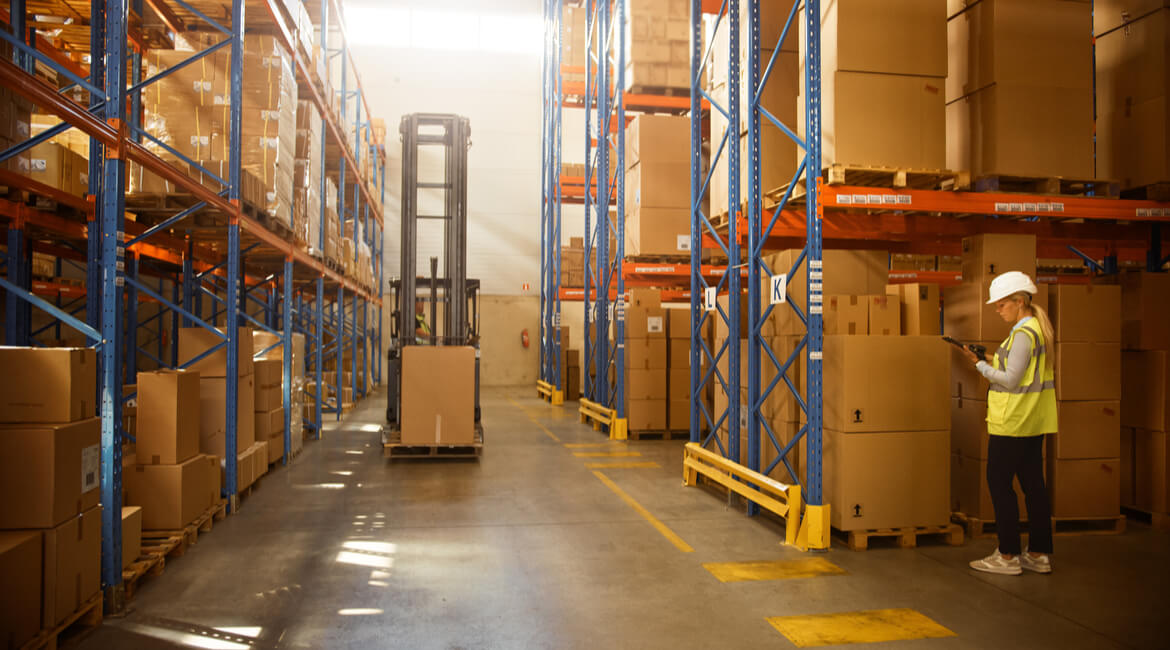RTLS system: the 2022 most advanced solutions

Among the most advanced solutions to support efficient and safe logistics, there are undoubtedly RTLS, Real-Time Locating Systems: a powerful and effective solution to better manage logistics, accurately determining the location of assets, equipment, vehicles, and people indoors and outdoors. In this perspective what is emerging – – in an increasingly dominant way – is the use of technologies such as low consumption Bluetooth (BLE) and the Ultra-wideband (UWB). These, compared to more traditional technologies, offer greater accuracy, better update times and, overall, the possibility to generate and manage more consistent and effective data series.
How will the RTLS system evolve in 2022?
To understand innovation on the RTLS scene in 2022 it’s necessary to start from an analysis of the current scenario. Today, many RTLS systems are based on “traditional” technologies such as RFID and wi-fi, or on solutions that exploit different physical means, including ultrasonic and infrared technologies. Each of these options has strengths (for instance, in case of RFID, a very modest cost per sensor), but also considerable weaknesses. The critical points of these solutions are the poor accuracy, infrastructural problems – due to difficulties in installation especially caused by the presence of physical barriers related to the surroundings – and too high tracking update times (i.e., too low update frequency).
However, for many years several solutions have been emerging to meet the main needs of enterprise RTLS systems: scalability, precision, autonomy. With the implementation of BLE (Bluetooth Low Energy) and most importantly UWB (Ultra wideband), the Real-Time Locating System technology has taken a leap forward. The 2022 most important innovation will be really a basis of products installed for these two solutions, especially UWB. Precisely this market will see a considerable growth this year – according to analyst forecasts – reaching 500 million units produced in the US market alone.
Top innovations for RTLS
As anticipated, 2022 will see a strengthening of the UWB market with regards to locating systems, driven mainly by two factors. The first is the rise of this technology also in the consumer market. This could facilitate the birth of hybrid architectures, especially in contexts that provide for BYOD policies (Bring Your Own Device). Yet the driving factor is without a doubt the technological side: UWB is able to offer considerably higher levels of accuracy than BLE, both in two-dimensional and three-dimensional localization. Today, technology allows to achieve a level of sub-metric precision in the real world. Experimental and particularly innovative implementations, though, make it possible to operate with even higher precision.
With such levels of detail, efficiency-enhancing applications become multiple. In addition to traditional management of vehicles, people, and warehouse supplies, it becomes possible, for instance, to also track the position of equipment within production departments.
Cost reduction
The drive of the industry brings with it a second benefit: the reduction of equipment and management costs, which allows to significantly expand the number of opportunities in order to adopt the use of RTLS systems. This is also thanks to a greater global interest in Real-Time Locating Systems: it is estimated that the entire market will exceed $ 10 billion by 2025. Also, it’s not meant to be underestimated the possibility of improving energy efficiency – for example, thanks to passive UWB solutions – which combine the main advantage of RFID technologies with the precision that is typical of the most advanced RTLS systems.
Intelligent data usage
In many cases, in the RTLS world there is a fundamental misconception: it is assumed that locating systems have mainly a proactive value or at most preventive. In the area of safety, workplace safety, for example, it’s believed that localization can be useful mainly to prevent collisions between vehicles and people or between vehicles and vehicles in the moment they’re about to happen. Thanks to software platforms that communicate with tracking devices, large amounts of telemetry data can be collected and complex location-based events managed in real time. The analysis of collected data can also be used in a predictive function: for example, by analyzing highest-traffic or assembly areas, it’s possible to rethink workflows, or arrangements of assets, to eliminate potential problems, remove bottlenecks and premises for future accidents.
Of course, all of this is possible only by having tracking systems that are reliable and accurate enough to provide consistent data, and an appropriate management and analysis system.
To think Future Proof RTLS systems
Given the substantial innovations for RTLS in 2022, companies that decide today to approach these systems, for themselves or for vendors who want to enhance their offer should be interested above all in a flexible infrastructure, which can also support the adoption of advanced analytics tools.
